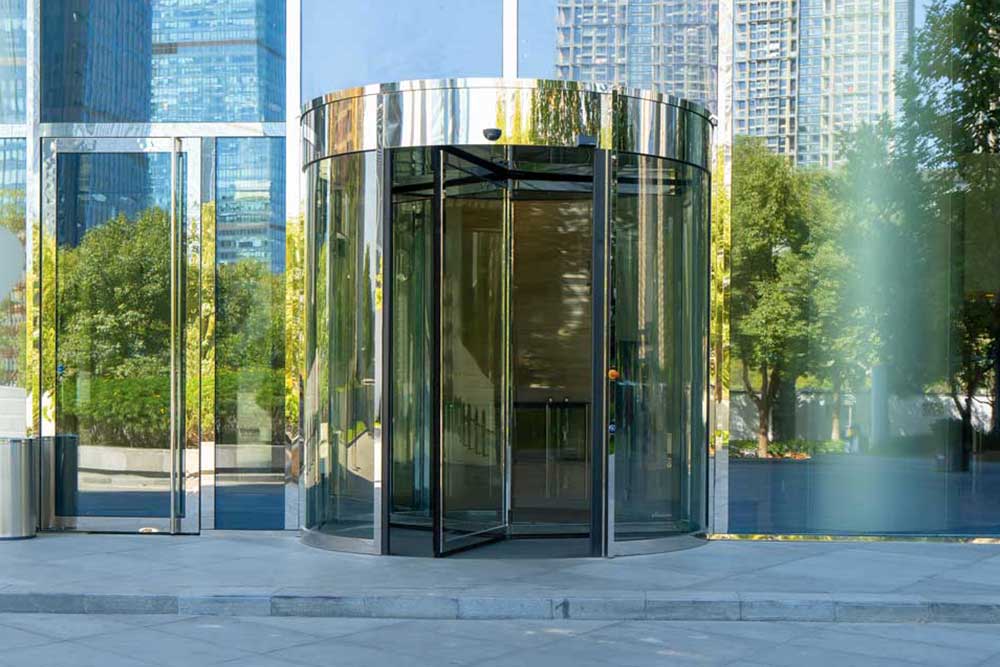Automated Door Maintenance have become ubiquitous in our daily lives, gracing the entrances of shopping malls, office buildings, hospitals, and airports. These sleek, sensor-driven portals offer convenience, accessibility, and a touch of futuristic elegance. But behind their seamless operation lies a critical factor: maintenance.
In this blog post, we’ll delve into why maintaining Automated Door Maintenance is essential. From safety considerations to cost-efficiency, we’ll explore the compelling reasons to prioritize regular upkeep. Whether you’re a business owner, facility manager, or simply someone who interacts with automatic doors, understanding their maintenance requirements is crucial.
Automated Door Maintenance are a common feature in commercial and residential buildings. They provide convenience, accessibility, and enhance the overall user experience. However, like any mechanical equipment, automatic doors require regular maintenance to function optimally. Let’s explore why maintaining these doors is crucial:
1. Safety
Safety is indeed a critical aspect when it comes to Automated Door Maintenance. Let’s delve into the importance of regular maintenance and inspections:
1. Regular Inspections:
- Automated Door Maintenance are designed to provide convenience and ease of access. However, like any mechanical system, they require periodic inspections to ensure proper functioning.
- During inspections, technicians check various components such as sensors, motors, hinges, and control systems. They look for signs of wear, misalignment, or damage.
- By identifying issues early, they can prevent unexpected malfunctions that could pose safety risks. For instance, a faulty sensor might fail to detect an approaching person, leading to a collision.
2. Malfunctions and Safety Hazards:
- Malfunctions can occur due to wear and tear, environmental factors (dust, debris, extreme temperatures), or electrical problems.
- Imagine a scenario where an V suddenly closes too quickly. This could result in someone getting caught or injured.
- Similarly, a door failing to open when someone approaches can lead to inconvenience, frustration, and potential accidents.
- Regular inspections help prevent such situations by addressing issues promptly.
3. Preventive Maintenance:
- Preventive maintenance involves routine checks, adjustments, and cleaning. It aims to prevent problems before they escalate.
- Lubricating moving parts, calibrating sensors, and ensuring proper alignment are part of preventive measures.
- Technicians also inspect safety features like emergency stop buttons and safety sensors. These features are crucial for preventing accidents.
4. Legal and Liability Considerations:
- Neglecting maintenance can have legal implications. Building codes and safety regulations often require regular inspections of automatic doors.
- Property owners and managers are responsible for maintaining safe premises. Failure to do so could result in liability if an accident occurs.
2. Longevity
Automatic doors, like any mechanical system, require regular maintenance to ensure their optimal performance and longevity. Here are some key points to consider:
Routine Checks:
- Regular inspections are essential. These checks help identify any issues early on, preventing them from escalating into major problems.
- Inspect the door’s components, such as sensors, motors, rollers, and tracks. Look for signs of wear, misalignment, or damage.
Lubrication:
- Proper lubrication is crucial for smooth operation. Lubricate moving parts, hinges, and rollers as recommended by the manufacturer.
- Lubrication reduces friction, minimizes wear, and extends the life of the door.
Adjustments:
- Over time, automatic doors may become misaligned due to heavy usage or environmental factors.
- Regularly adjust the door’s sensors, closing speed, and safety features to ensure they function correctly.
Cleaning:
- Keep the door and its surroundings clean. Dust, debris, and dirt can affect the door’s performance.
- Regularly clean the sensors, glass panels, and tracks.
Weather Sealing:
- Automatic doors are exposed to various weather conditions. Ensure that weather seals are intact and functioning properly.
- Damaged seals can lead to air leaks, affecting energy efficiency and potentially causing premature wear.
Safety Measures:
- Test safety features, such as motion sensors and emergency stop buttons, regularly.
- Faulty safety mechanisms can pose risks to users and may lead to costly repairs.
3. Efficiency
Efficiency in the context of automatic doors refers to how effectively they perform their intended functions while minimizing waste. Here are some key aspects related to efficiency:
Smooth Operation: Efficient automatic doors operate smoothly. When sensors detect a person approaching, the doors open promptly and without hesitation. Conversely, when there’s no one nearby, they close seamlessly. Smooth operation ensures that foot traffic flows without interruptions, reducing waiting times and enhancing overall convenience.
Calibrated Sensors: Properly calibrated sensors are crucial for efficiency. These sensors detect motion, presence, or proximity and trigger the door’s opening or closing mechanism. If sensors are misaligned or malfunctioning, the doors may open too late or too early, leading to inefficiencies. Regular maintenance and calibration ensure optimal sensor performance.
Clean Tracks and Lubrication: Automatic doors move along tracks or rails. Over time, dust, debris, and wear can affect these tracks. Clean tracks are essential for smooth movement. Additionally, well-lubricated moving parts (such as hinges and rollers) reduce friction, allowing the doors to open and close effortlessly. Neglecting maintenance can result in sluggish or noisy operation.
Energy-Saving Features: Many modern automatic doors come equipped with energy-saving features. These include:
- Motion Sensors: Doors activate only when someone approaches, minimizing unnecessary energy consumption.
- Timed Closure: After a certain period of inactivity, the doors automatically close to prevent conditioned air (heating or cooling) from escaping.
- Low-E Glass: Energy-efficient glass panels help maintain indoor temperatures by reducing heat transfer.
Regular Maintenance: Efficiency is closely tied to proper maintenance. Regular inspections, cleaning, and adjustments ensure that automatic doors function optimally. Maintenance personnel should address any issues promptly to prevent energy wastage and operational inefficiencies.
4. Cost-Efficiency
Preventative maintenance is a strategic approach that focuses on identifying and addressing potential issues before they become significant problems. Here’s why it’s cost-effective:
- Early Detection of Problems: Regular inspections allow you to spot minor issues early. By addressing these small problems promptly, you prevent them from developing into larger, more expensive issues. For example, fixing a small leak in a pipe is much more cost-effective than dealing with a burst pipe that floods an entire room.
- Reduced Downtime: When equipment or systems break down unexpectedly, it leads to downtime. Downtime can be costly for businesses, especially in production environments. Preventative maintenance minimizes unexpected breakdowns, ensuring smoother operations and reducing downtime-related expenses.
- Extended Lifespan: Proper maintenance extends the lifespan of equipment, machinery, and infrastructure. Regularly servicing and replacing worn-out parts can significantly prolong their usability. This means you get more value out of your initial investment.
- Predictable Budgeting: Planned maintenance allows for better budgeting. Instead of dealing with sudden, emergency repairs, you can allocate resources for scheduled maintenance. Predictable expenses are easier to manage and help avoid financial surprises.
- Avoiding Catastrophic Failures: Major failures can be catastrophic, both financially and operationally. For instance, a critical machine breaking down during peak production can lead to missed deadlines, lost revenue, and reputational damage. Preventative maintenance reduces the risk of such catastrophic events
How Often Should You Service Automatic Doors?
Usage Patterns:
- High-Traffic Areas: These are locations where doors experience frequent use, such as building entrances, lobbies, or corridors. In such areas, doors are subjected to more wear and tear due to constant opening and closing. As a result, they require more frequent servicing.
- Low-Traffic Zones: These are areas with less foot traffic, such as storage rooms, back offices, or infrequently used entrances. Doors in these zones may not need as frequent maintenance.
Factors Influencing Servicing Frequency:
- Frequency of Use: The more a door is used, the more often it should be inspected and serviced. High-traffic doors may need monthly or quarterly inspections.
- Environmental Conditions: Doors exposed to harsh weather (rain, snow, extreme temperatures) or corrosive environments (chemicals, salt, etc.) may require more frequent maintenance.
- Door Type: Different door types (e.g., swinging, sliding, revolving) have varying maintenance needs. Consult the manufacturer’s guidelines for specifics.
- Components: Hinges, rollers, tracks, and seals are critical components. Regular lubrication, adjustment, and cleaning are essential.
- Safety Regulations: Compliance with safety standards (e.g., fire doors, emergency exits) necessitates regular inspections.
Maintenance Schedules:
- High-Traffic Areas: Consider monthly or quarterly inspections. Lubricate moving parts, check for wear, and ensure proper alignment.
- Low-Traffic Zones: Annual inspections may suffice. Verify seals, hinges, and locks. Lubricate as needed.
- Emergency Doors: These must be inspected more frequently to ensure functionality during crises.
What Does Professional Automatic Door Maintenance Involve?
When a commercial door technician services your automatic doors, they typically follow these steps:
- Inspection: Thoroughly examine mechanisms, including sensors, motors, and tracks.
- Cleaning: Remove dirt and grime from moving parts.
- Lubrication: Apply lubricant to ensure smooth operation.
- Adjustment: Calibrate sensors, door speed, and other parameters.
- Safety Checks: Verify obstruction sensors and emergency functions.
- Testing: Test the door to identify any issues.
- Documentation: Provide a detailed report on findings and work done.
Between Services: What You Can Do
While professional maintenance is essential, you can contribute to your door’s well-being:
- Daily Inspections: Look for loose parts, frayed cables, irregular movement, or unusual sounds.
- Sensor Cleaning: Occasionally wipe down sensors with a soft cloth to remove dust.
- Track Maintenance: Keep tracks free of dust and obstructions.
Ensure the smooth operation of your automated doors with Glass World’s maintenance services


